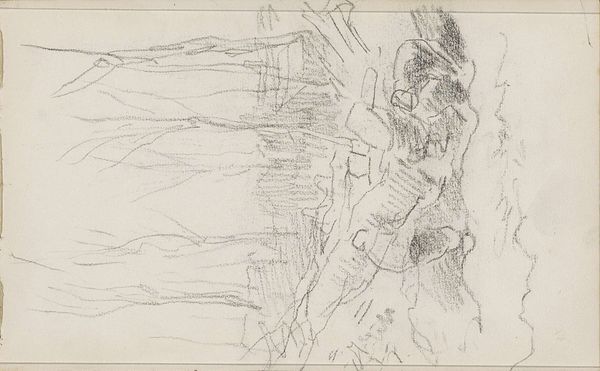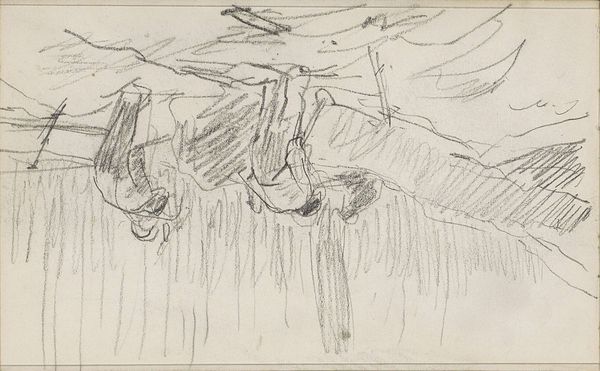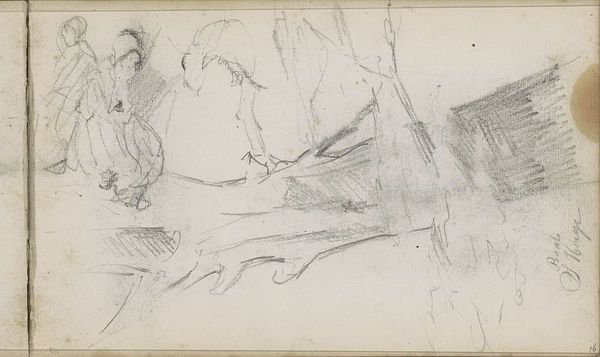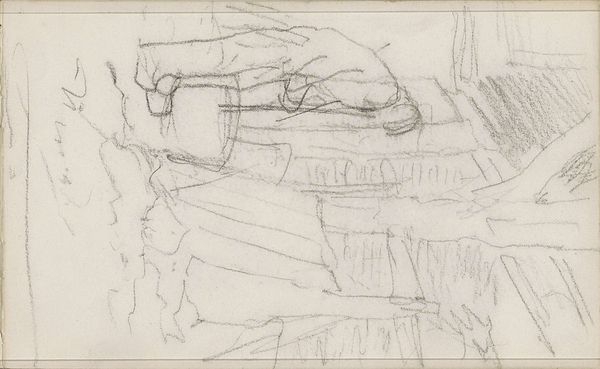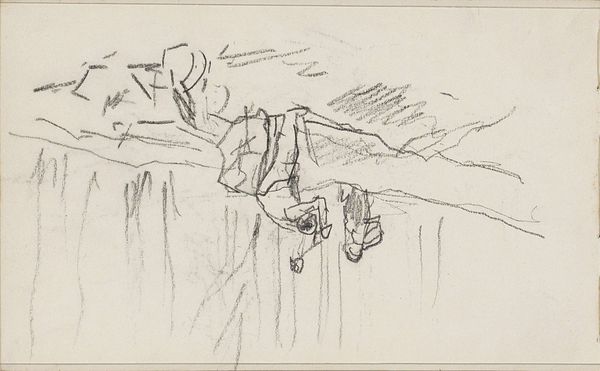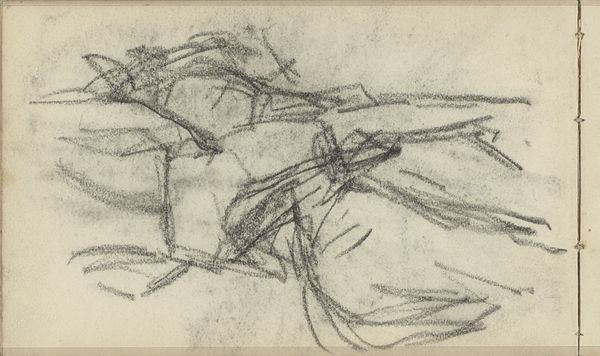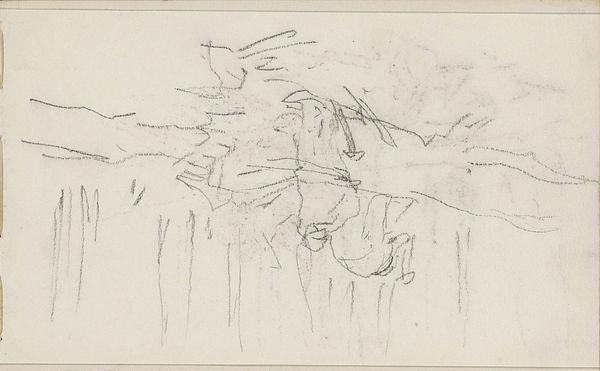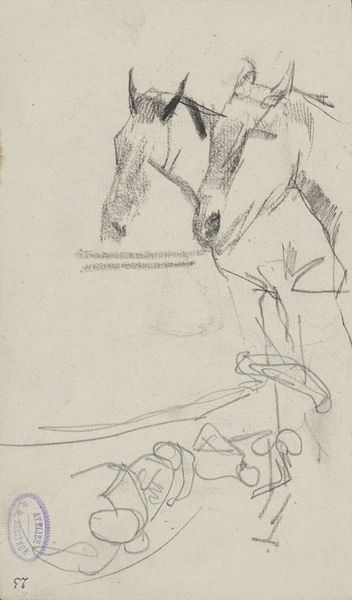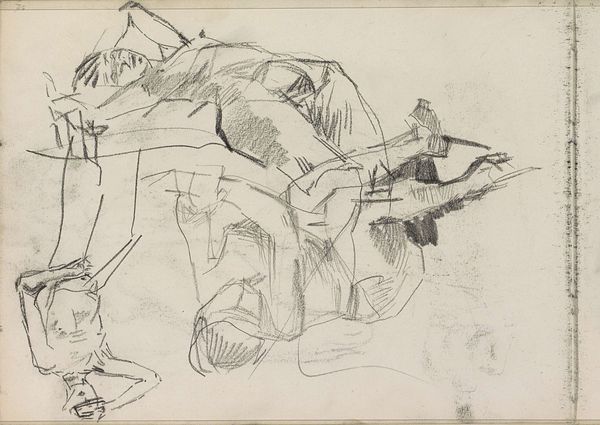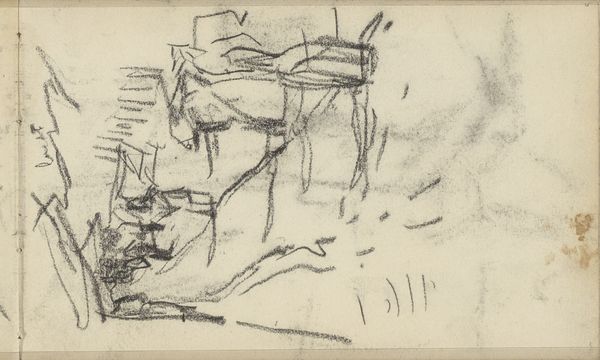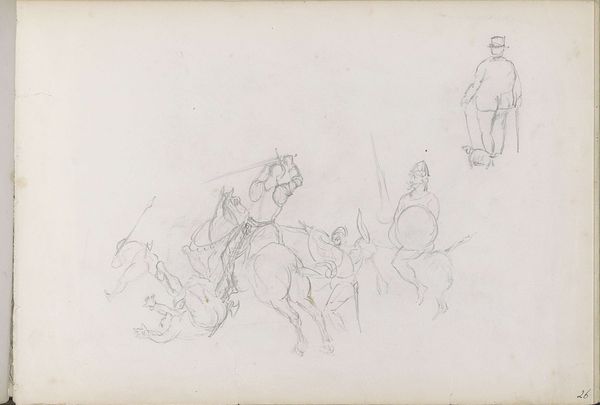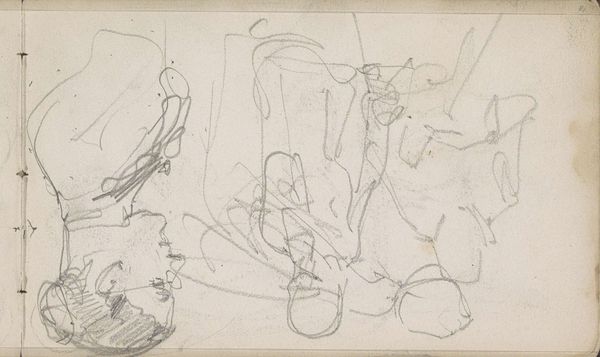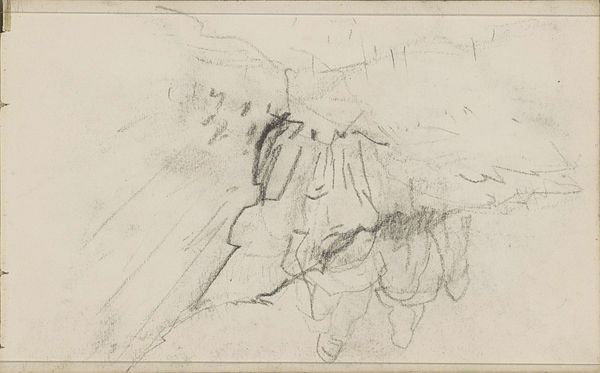
drawing, pencil
#
drawing
#
pencil sketch
#
landscape
#
forest
#
pencil
#
realism
Copyright: Rijks Museum: Open Domain
Editor: Anton Mauve's pencil drawing, "Woodcutters in a Forest," made sometime between 1848 and 1888, is incredibly evocative, even in its sketched form. It's fascinating how much mood is created with so few lines. How do you interpret this work, particularly in relation to its historical context? Curator: Mauve, a member of the Hague School, sought to capture the honest realities of rural life. This drawing, with its rudimentary marks, resonates deeply with archetypal depictions of labor and nature’s resistance. The woodcutters themselves—faceless, almost skeletal—become symbols. What emotions do their obscured faces evoke in you? Editor: I suppose it gives them a universal quality, but it also feels a bit…ominous. Like the forest is consuming them, or vice versa. Curator: Exactly. The forest, dense and looming, holds tremendous symbolic weight. Forests historically represent the unknown, the place of trials, but also of spiritual refuge. Here, however, the woodcutters engage in a disruptive act against this natural sanctuary. What might that tension between labor and environment tell us? Editor: Perhaps it's about the human cost of industry, even in its earliest forms. The bareness of the sketch emphasizes the starkness of the reality. Curator: Precisely. The seemingly simple act of chopping wood transforms into a potent image of human impact and a reflection on our intertwined destiny with nature. The pencil, therefore, becomes Mauve’s chosen tool for articulating complex narratives. Editor: I never thought a quick sketch could hold so much meaning. Curator: Mauve's genius lies in distilling potent ideas into elemental forms, allowing us to confront age-old questions through simple, compelling images. We're invited to contemplate our connection to, and impact on, the world around us, symbolized through these haunted figures.
Comments
No comments
Be the first to comment and join the conversation on the ultimate creative platform.
